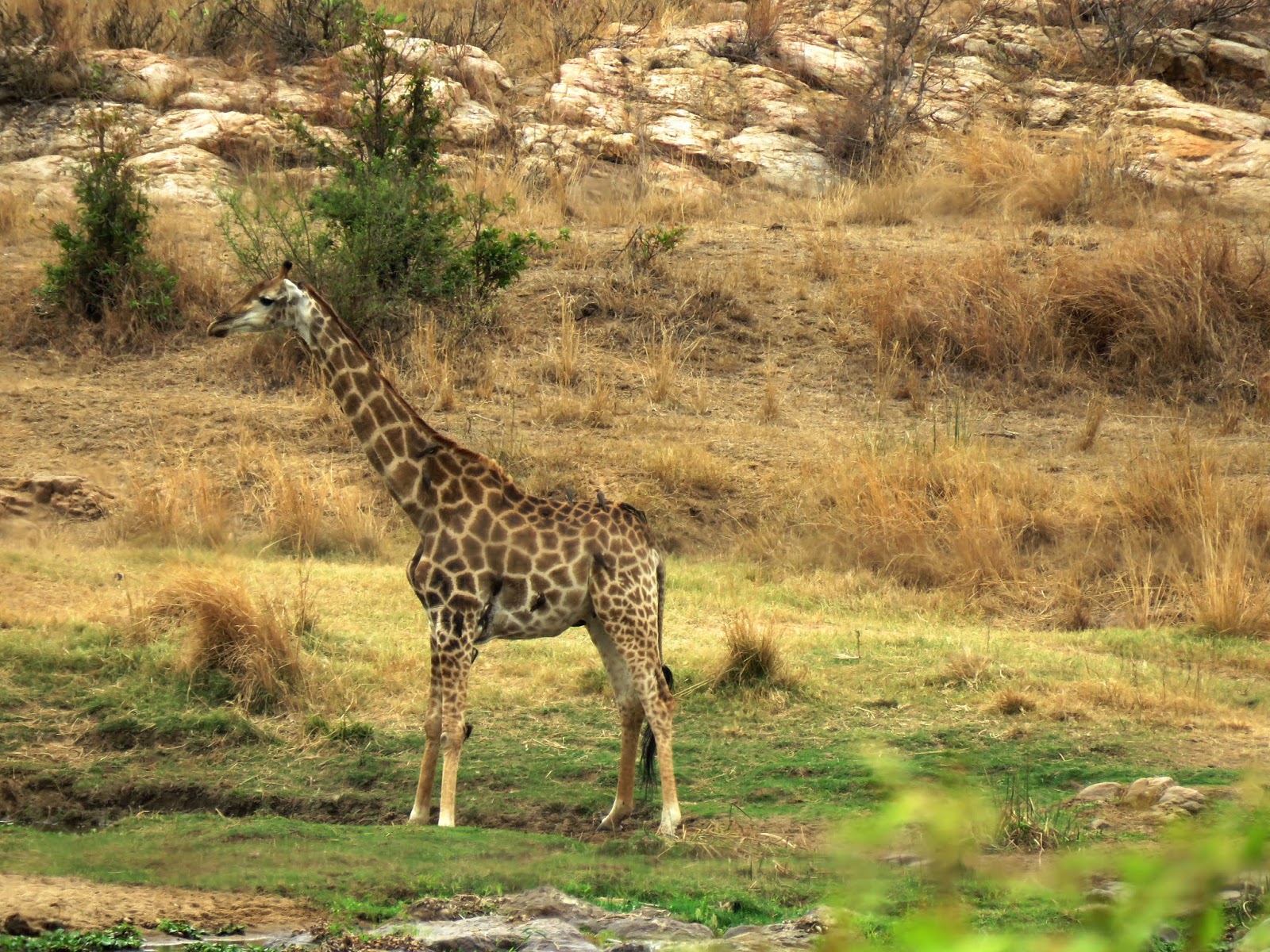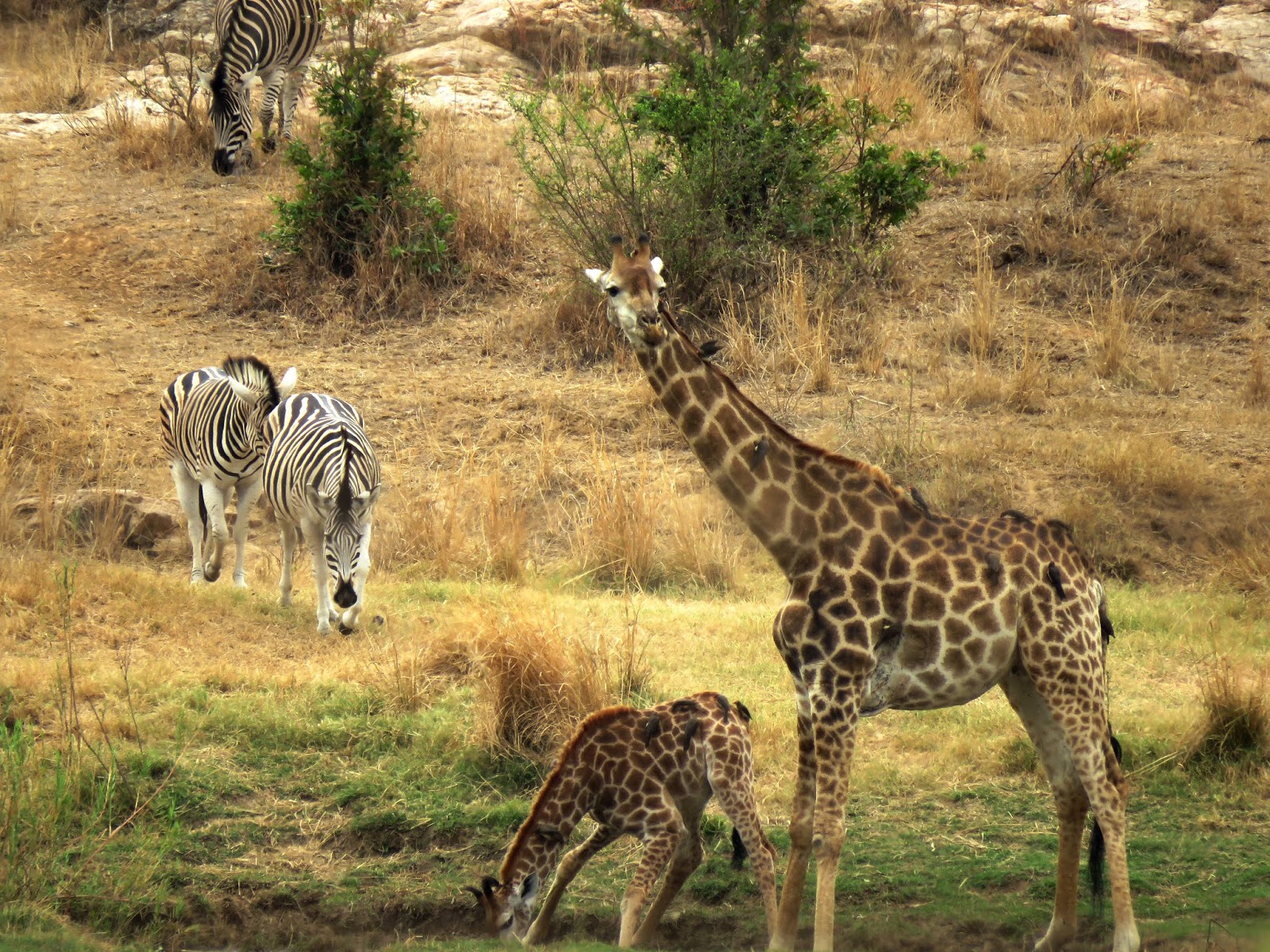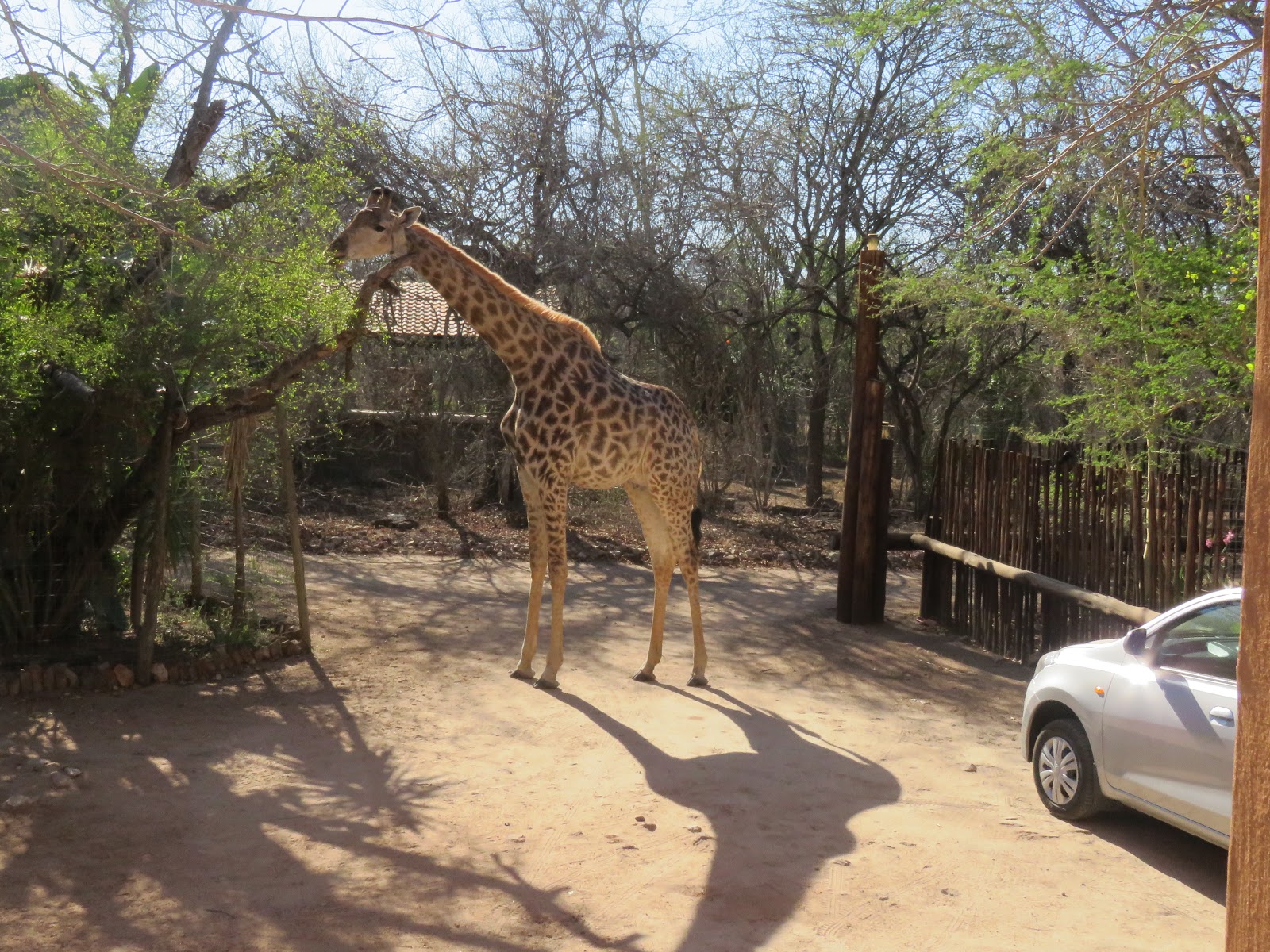 |
| When we turned onto Swartwitpens Road, we spotted this giraffe with a dilemma when returning from the river. She wanted to cross the road to join her tower of giraffes but could not cross this deep trench. |
“Sighting of the Day in the Bush”
 |
| A young male kudu learns how to be so cute it’s impossible to resist giving him pellets. |
It was an excellent Sunday in the bush. We began our day, as always, with coffee and tea on the veranda. I’d gotten up early to start cooking the crustless cheesy sausage and egg quiche to bring to the bush braai at Frikkie’s Dam and made a pan of well-seasoned chicken wings, both of which we shared at the gathering.
 |
| The trench was dug to make way for power lines and had yet to be completed from what we understand. |
Lois sliced cheddar cheese sticks and brought along crackers for the two of them. We packed the cooler with ice, beverages including beer, wine, gin and tonics, and vodka and Sprite Zero for some options during the day-long event. The two Toms drank Lion brand beer while Lois and I had a few lightweight gin and tonic cocktails and vodka and Sprite.
 |
| Her “friends” or family members on the opposite side of the road noticed her dilemma between nibbles on treetops. |
After paying the required ZAR 100 (US $6.87) per carload at the entrance gate to Lionspruit, a game reserve within Marloth Park, we were on our way to Frikkie’s Dam down a series of bumpy dirt roads, hoping to see a few of the wildlife that lived therein.
 |
| It didn’t appear there was any way they could help, so they went back to eating. |
We arrived at the braai area in Frikkie’s Dam to find Louise and Danie had everything set up as usual. It was a pleasure to have Tom and Lois along with us for yet another fine African experience, unlike anything they’ve ever done in their lives.
 |
| She continued to contemplate a solution. |
Who has the opportunity to enjoy lunch among the wildlife in a game reserve in Africa? It’s truly a once-in-a-lifetime experience. And for us, we’re grateful to have had the opportunity to participate in social events in this magical place, Marloth Park.
 |
| The giraffe on the far left seemed more concerned than the giraffe in the forefront. |
As for today’s giraffe photos, these were taken on Saturday when we embarked on the usual two-hour drive in the park searching for unique and unusual sightings, along with all the typical sightings we’ve encountered in Marloth Park.
 |
| Again, she considered her options. Surely, the crossing could easily lead to a severe injury. |
After several excellent sightings, we decided to head back to the house for some relaxation time and shower and dress for our upcoming evening and dinner at Jabula.
 |
| Finally, she gave up, considering crossing, and walked along the trench to its end. |
Little did we know, we’d encounter the giraffe situation represented today in our photos. Yes, it was a simple situation; a giraffe unable and unwilling to cross a deep trench that had been made in preparation for laying new electrical lines.
 |
| The one giraffe continued to follow her with his eyes. |
Had she tried to cross the trench, she could easily have been injured, perhaps even breaking a leg or worse. She knew this was a precarious situation and didn’t want to risk life or limb. She looked at her friends/family members from time to time seeking help, and one of them responded in contemplating what could be done.
 |
| He desperately wanted to help. |
Realistically, her only safe option was to walk all the way to the end of the trench, cross the road and double back to meet up with her tower of giraffes.
Watching her indecisiveness along with her desire to get across was tender and elicited considerable emotion from all of us. We were in awe of her determination and innate sense of caution at the same time.
 |
| Finally, he took off down to road to see where she went. |
Finally, she gave up and decided to walk the length of the road on her side of the trench. When she reached the end, she made her way to the road and surely met up with the remainder of her group. It was a special sighting, one we’ll all always remember.
 |
| He was stymied as to where she may have gone. |
This morning we drove to Komatipoort from breakfast at Stoep Cafe, which we hope to return to one more time before Tom and Lois depart on Thursday to return to the US.
As soon as we upload this post, we’re on our way for the final time for the four of us to Ngwenya for river viewing and dinner. There’s no buffet tonight, but we’ll all order off the menu after spending time on the veranda perusing the Crocodile River for whatever Mother Nature wants to present to us tonight.
 |
| Finally, she made it to the open road and waited for her friends to arrive. Happy ending. Happy giraffe. Happy us for witnessing this event. |
May your day and evening present you with those unique things that make your heart flutter.
Photo from one year ago today, October 29, 2017:
 |
| A massive bull on his way to…who knows what? For more photos from Managua, Nicaragua, please click here. |















































































































